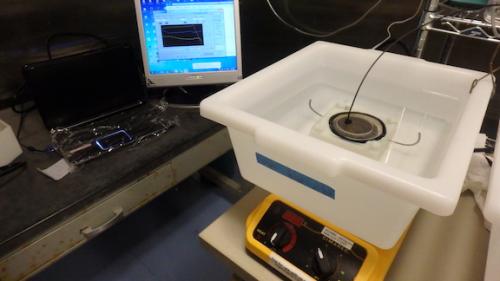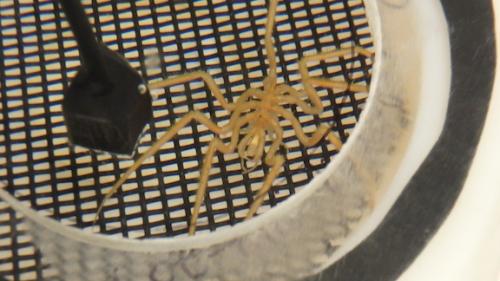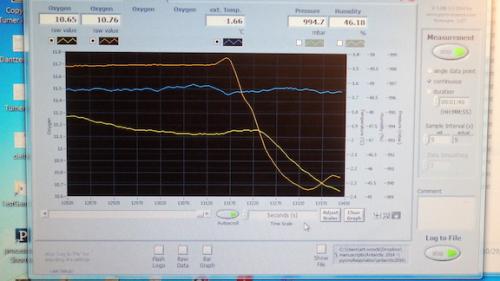The oxygen hypothesis operates on the idea that the maximum size of an animal is related to how much oxygen is available in its environment and how much it uses. The energy that powers all of the reactions and processes that make up an animal ultimately comes from its food source. Most of us understand that consumed food gets broken down by the digestive track into molecules and those molecules contain energy. But in order to get from "food" molecules to energy-carrying molecules that cells need to operate, our cells need to power a process called cellular respiration. A scan of a high school biology textbook will give you the basics on the process. Briefly, inside the cells of all animals, small organelles called mitochondria break down glucose to make ATP, the energy that different cell types (nerves, muscles, skin, bone, etc.) use to do what cells do. The important thing to understand is that cellular respiration powers metabolism - the sum of all the biochemical reactions that make up an organism - and the process needs oxygen. Lots of oxygen.
 A respirometry chamber sits inside a water bath on top of a stirring plate. The black wire is an optode that measures oxygen levels in the chamber continuously.
A respirometry chamber sits inside a water bath on top of a stirring plate. The black wire is an optode that measures oxygen levels in the chamber continuously.
The larger an animal the more oxygen it requires, so sea spiders enter into this conversation because they're a diverse group (250 species in the Antarctic and sub-Antarctic) that are found in a wide variety of sizes that we can compare. We can experimentally measure the metabolic rates of sea spiders across a wide range of sizes to gain some insight into what causes some of them to get so big in the polar regions. Cold water is better at dissolving gases; Antarctic sea water is some of the coldest on Earth (29F/-2c) and has a higher concentration of dissolved oxygen than water a few degrees warmer. With more oxygen available here, the oxygen hypothesis states that there's more evolutionary "room" for animal species to evolve large body size. But if large animals are operating at their limits by using up oxygen as rapidly as it can be supplied by the water, what will happen should oxygen concentrations drop? And how does this compare to smaller sea spiders that may not need all of the oxygen available to power their metabolism?
 A sea spider sits beneath the glass in a closed respirometry chamber. After its 12-hour run, it will be weighed, photographed, and returned to the aquarium.
A sea spider sits beneath the glass in a closed respirometry chamber. After its 12-hour run, it will be weighed, photographed, and returned to the aquarium.
The experiment I'm running tests this by measuring the metabolic rate of sea spiders when exposed to different seawater oxygen concentrations. By measuring the amount of oxygen a sea spider takes out of the water in a closed "respirometry" chamber, we can say things about its metabolic rate. The basic experimental design has me placing a sea spider in a respirometry chamber, connecting an optode that uses light to measure dissolved oxygen through clear glass, and recording the minor changes in oxygen in the chamber caused by the sea spider. At several points over the course of a 12-hour-long "run," I'll carefully add in water with low oxygen concentrations to the chamber while a computer constantly records the oxygen level. This allows us to see how the animal's metabolic rate changes at different oxygen levels. By comparing the slopes of the lines describing oxygen use - and therefore, metabolic rates - from sea spiders of different sizes, we can start to see what sort of role oxygen availability plays in explaining polar gigantism. Even though I've been at this for days, I'll need many more day-long runs before we can start to talk about what our data are showing us, so stay tuned for updates!
 By measuring the slope of lines in oxygen "traces," we can see how metabolism changes under different oxygen conditions.
By measuring the slope of lines in oxygen "traces," we can see how metabolism changes under different oxygen conditions.

Comments